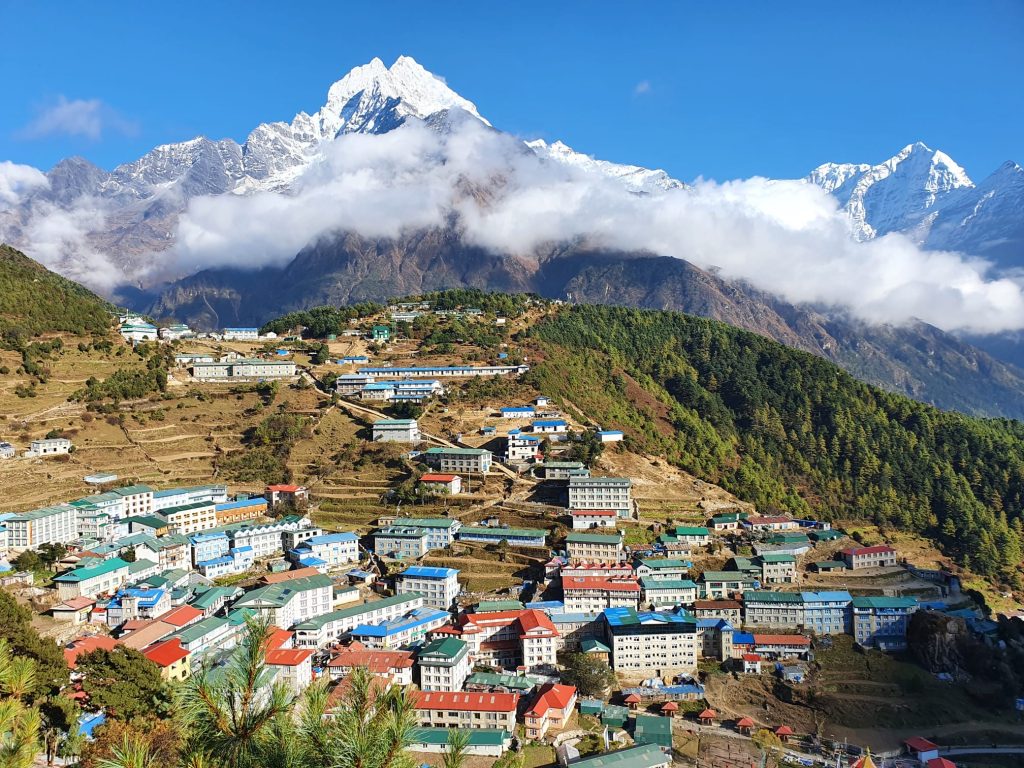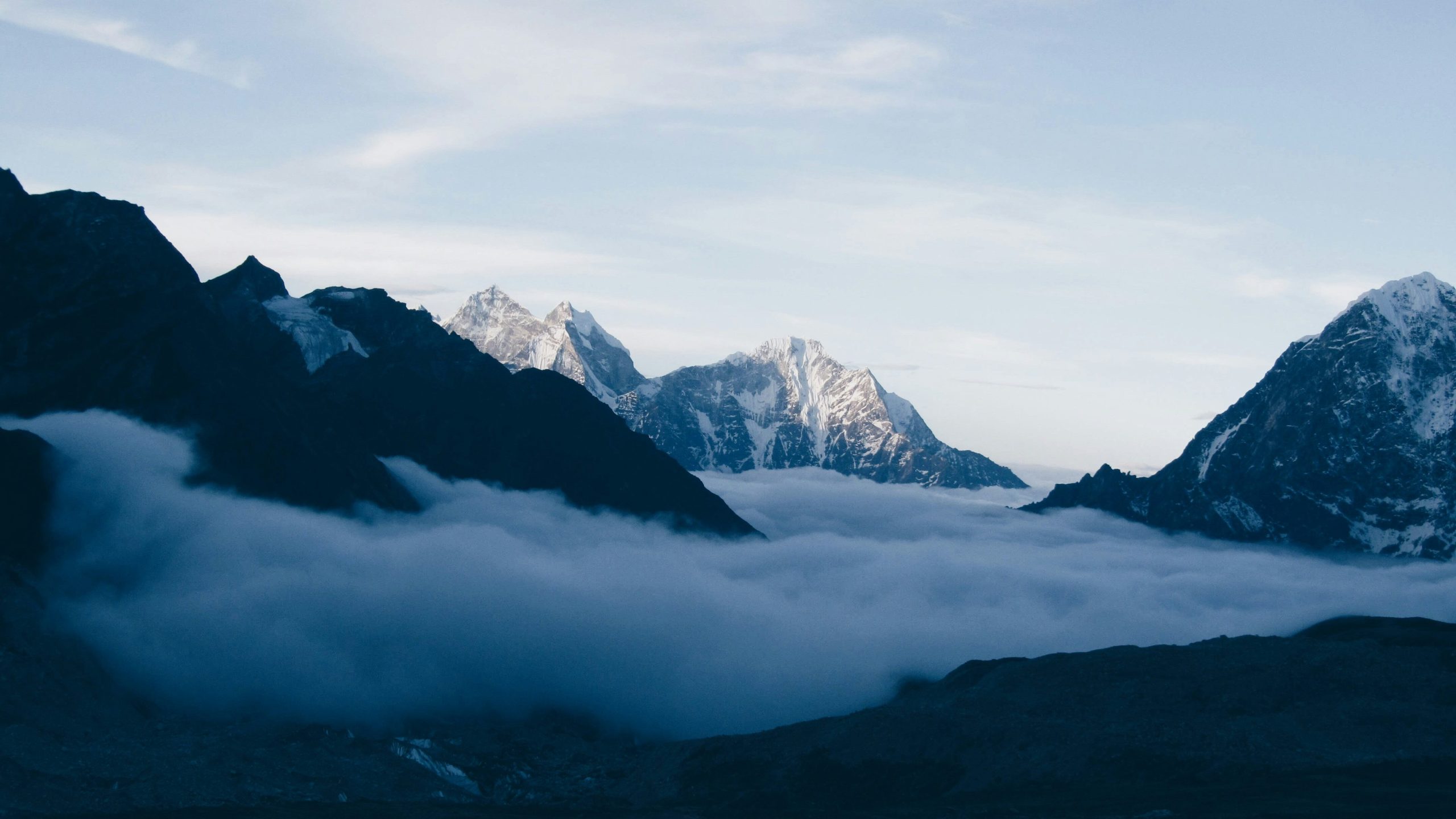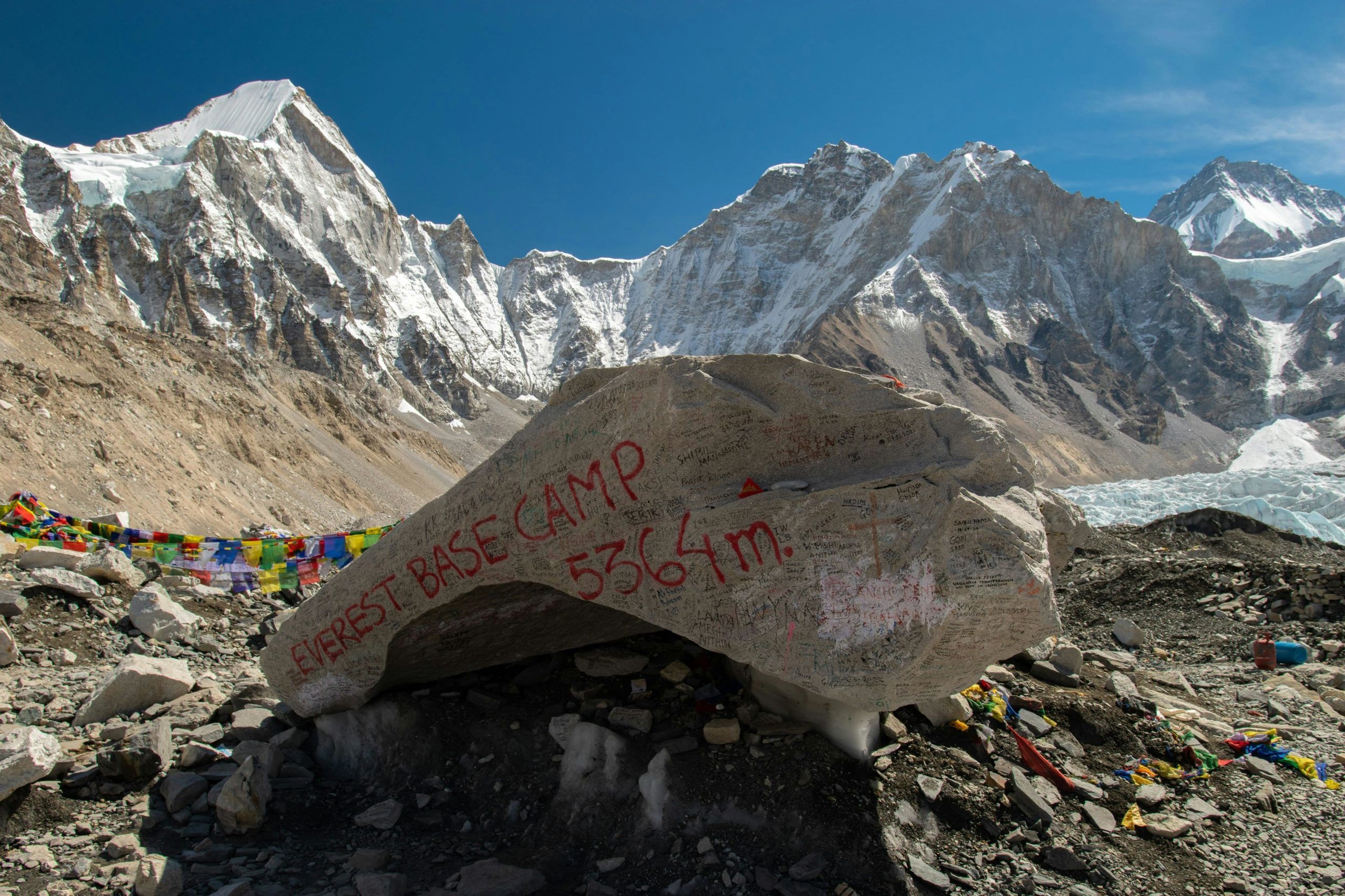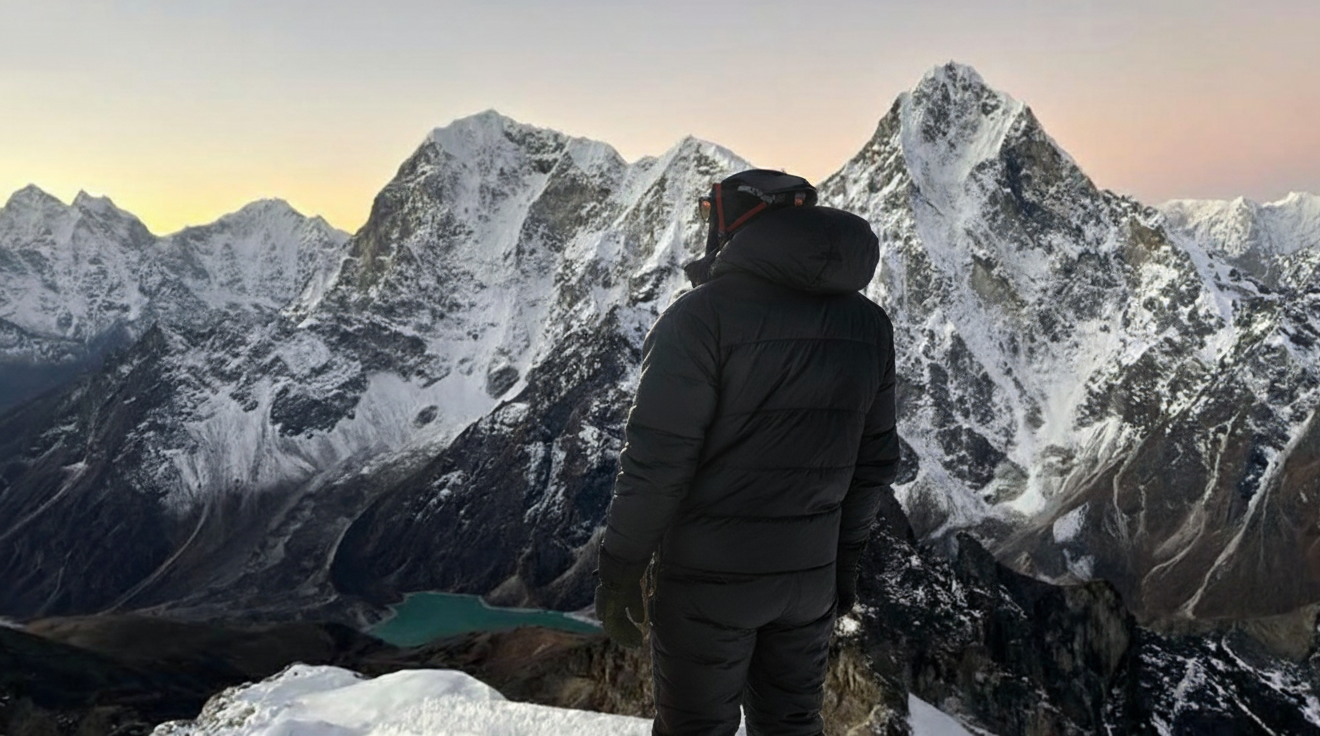Getting to Everest Base Camp

Listed on countless bucket lists, it’s our turn to write about the world’s most famous trek. You’re guaranteed to lose a few pounds but gain so much more in memories and experience.
Lukla (2,845m)
Your journey begins on a runway that feels too short, nestled between mountains, where you’re suddenly breathing different air that’s thinner and sharper. The initial days are a green blur of rhododendron forests, suspension bridges swinging over roaring rivers, and the constant chime of yak bells as you ascend among the Sherpa people.
It’s worth noting that not all treks head the same way. For example the popular Mera Peak summit follows a divergent path from this airport.
Namche Bazaar (3,440m)

Acclimatization for most would begin around Namche Bazaar, often called the “Gateway to Everest”, where you’ll find a bustling town that glows at night.
Headaches become common companions. Sleep can be elusive. This vibrant hub, carved into a crescent-shaped mountain face, offers a first proper glimpse into Sherpa culture and the scale of the Himalayas. That appetite you had back home? It might just vanish, replaced by a constant mild nausea.
If any last minute shopping/renting need be done, this would be the spot.
Tengboche (3,867m)

Beyond Namche, the trail continues its relentless climb through fragrant juniper and rhododendron forests. Tengboche emerges as a serene and incredibly scenic stop, dominated by its famous monastery. This is the spiritual centre of Khumbu, where trekkers and climbers often receive blessings for safe passage. The views from here are nothing short of spectacular, with Ama Dablam, Everest, and Lhotse filling the horizon.
Deboche (3,820m)
Just a short distance below Tengboche, Deboche offers a quieter, more intimate setting. Often a stop for lunch or a peaceful overnight stay, it’s surrounded by lush forests and offers a gentle descent from Tengboche, providing a brief moment of reprieve before the serious ascents continue. It’s a reminder that even in the vastness of the Himalayas, small, charming settlements offer warmth and shelter.
Pangboche (3,985m)
Pangboche is one of the oldest and most traditional Sherpa villages in the region. Its ancient monastery is a treasure trove of history, rumored to house a Yeti scalp. This village provides a deeper connection to the local heritage and a stunning vantage point overlooking the Imja Khola river. The air is thinning, and the mountains grow ever closer, signaling your deep immersion into the high Himalaya.
Dingboche (4,410m)
Nestled in the beautiful Imja Valley, Dingboche marks a significant milestone in your ascent. The landscape here transitions dramatically to sparse, alpine tundra, dominated by stone walls and grazing yaks. Another crucial acclimatization stop, you’ll typically spend an extra day here to help your body adapt. The surrounding peaks, including Ama Dablam, Island Peak, and Lobuche East, create a majestic amphitheater, reminding you of the formidable challenges that lie ahead.
Climbers wishing to scale the famous Island Peak diverge here.
Lobuche (4,940m)
The trek to Lobuche is often tough, gaining significant altitude through an exposed, rocky landscape. Located at the foot of the Khumbu Glacier, this small settlement serves as the last major stop before Everest Base Camp. The air is noticeably thin, and the cold bites harder here. It’s a place of hushed anticipation, where trekkers prepare for the final push, surrounded by immense peaks and a palpable sense of the mountaineering history that permeates the air. This is also the starting point for those tackling Lobuche East, a fantastic beginner mountain for Everest and technical climbing.
Gorak Shep (5,164m)
The last inhabited spot with lodges before Everest Base Camp. It’s stark, often windswept and strategically vital. Most trekkers spend the night here, using it as a base for both their journey to EBC and an early morning ascent to Kala Patthar. The landscape here is truly lunar, dominated by rocks, ice, and the sheer scale of the surrounding giants.
Everest Base Camp (5,364m)

A job well done! EBC is now a temporary city of tents pitched on a glacier that has lasted over 70 years since. You’ll walk amidst tents of expeditions preparing for the summit, an incredible atmosphere of ambition and camaraderie. While Everest’s summit is partially obscured, the energy, the history, and the sheer awe of being at the foot of the world’s highest mountain are undeniable.
Khumbu Icefall (5,486m) – Gateway to the Summit.
Starting right at the end of EBC on the side closest to Everest itself, the Khumbu Icefall is a chaotic, frozen river of ice, constantly shifting, groaning, and calving. It is a dynamic, massive, and highly dangerous section of the Khumbu Glacier that flows down from the Western Cwm.
Mount Everest itself is partially hidden by Nuptse, a guardian peak. But the scale, the sheer audaciousness of what lies beyond the Icefall – that’s what hits you. This is where dreams are launched, where immense courage is gathered.
Kala Patthar (5,643m) – Front row seat to Everest

For the classic, unobstructed Everest panorama, the final push is to Kala Patthar. ‘Black Stone.’ A short, steep hike from Gorak Shep, usually at dawn. The air bites. Your legs are heavy. But as the sun kisses the summit of Everest, turning it to gold, you understand. The view here, higher at 5,643m, truly is better than EBC itself. It’s your front-row seat to the top of the world.
The Trek Back
Once you’ve gasped your sigh of relief having reached the end destination and witnessing the almighty, the descent is physically and mentally the easiest part. Commend your fortitude and resilience on the way down.
Everest Base Camp is an internal expedition, a deep dive into discomfort and awe, and ultimately, a profound encounter with your own capabilities. And that, in a nutshell, is why it’s more than just a destination. It’s a transformation.


